Load securing - we take it very seriously!
-
-
-
-
Stowage: The load is positioned so that it supports each other and remains stable. The load should not be able to move or slip.
-
Lashing: The load is secured with straps, chains or ropes to hold it in place. The attachment points must be strong enough to hold the load.
-
Blocking: The load is blocked with suitable aids such as wedges, plugs or pads to prevent it from shifting or tipping over.
-
Covering: The load is covered with a tarpaulin or net to protect it from external influences such as wind, rain or dirt.
-
-
-
- The driver is responsible for securing the load during transportation and must ensure that the load is properly secured before driving off.
- The shipper is responsible for packing and stacking the load in such a way that it does not slip or become damaged during transportation.
Examples of effective load securing
On this page you will find some examples and explanations on the subject of load securing and how we handle the subject to protect your goods and people.
We also differentiate again between trailers and tractor units:
Perforated strip
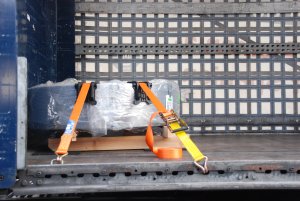
In trailers, perforated strips serve as flexible fastening points for load securing. They are embedded in the side walls or on the floor of the trailer and allow securing devices such as tension belts, locking beams or nets to be hooked in at various positions.
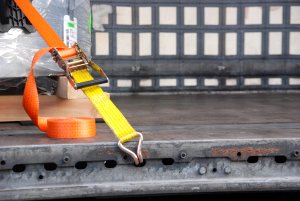
This means that the load securing equipment can be positioned individually and optimally depending on the size, shape and weight of the load. This offers a high degree of flexibility in load securing, as a wide variety of loads can be effectively secured, which significantly increases safety during transportation.
Anti-slip mats (ARM)
Anti-slip mats prevent the goods from slipping. We only use high-quality anti-slip mats with corresponding certificates.
You can find them on our download page
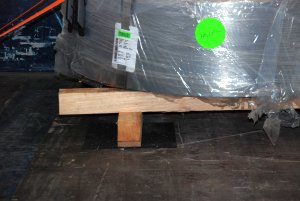
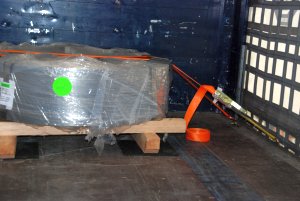
Tension belts
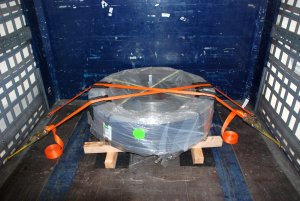
Lashing straps play a central role in securing loads in our trucks, as they provide an effective method of fixing the load securely and firmly to the loading area. They are used to secure the goods against the movements and forces that can occur during transportation (such as braking, accelerating or cornering).
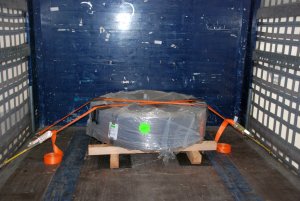
This prevents the load from slipping, tipping over or falling, which not only increases the safety of the load itself, but also significantly improves road safety. The use of tension belts ensures that the load remains stable throughout the journey and arrives at its destination undamaged.
Especially when transporting steel, hazardous goods, paper, waste or high-quality electronics, proper load securing with tensioning straps is essential.
You can find the relevant certificates on our download page.
Clamping beam
Tension beams are also known as locking beams. They are used in load securing to clamp and stabilize your goods.
Clamped between the walls of the load compartment, they exert pressure to hold the load in place and prevent it from shifting or tipping over during transportation. This is particularly important for transport vehicles that are not fully loaded or, for example, for your high-value beverage transports that are susceptible to movement.
This makes a decisive contribution to safety during transportation.
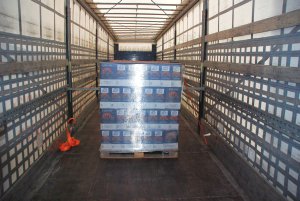
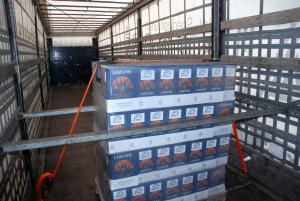
Edge protectors
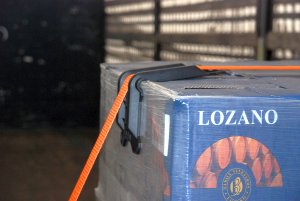
We use edge protectors to protect the edges of your packaged goods from damage caused by strapping, belts or chains. They distribute the pressure evenly over a larger area to prevent the load from being damaged by excessively tight securing equipment.
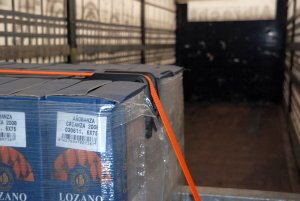
At the same time, they help to prevent the load from shifting during transportation by increasing the friction between the load and the securing equipment, resulting in a safer and more stable load.